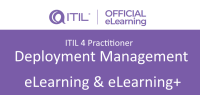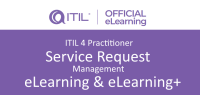DSDM is a proven framework for Agile project management and delivery, helping to deliver results quickly and effectively and, over the years, has been applied to a wide range of projects - from small software developments all the way up to full-scale business process change. Although DSDM works easily and effectively on small, simple projects, it has always maintained a strong focus on the corporate project-based environment to provide a “grownup” approach to Agile in the complex corporate world.
DSDM was initially created in 1994 through collaboration of a large number of project practitioners across many companies who were seeking to build quality into Rapid Application Development (RAD) processes as they developed, primarily, business-focussed computer solutions.
The contributing companies initially formed the DSDM Consortium as a not-for-profit organisation to manage the sharing, exploitation and evolution of the intellectual property of DSDM. Initially this was on behalf of, and exclusively for, the Consortium members. However in 2007 with the full support of its member organisations, the DSDM Consortium made DSDM universally available on a free to view and free to use basis.
The DSDM Agile Project Framework
The DSDM Agile Project Framework is an evolution of DSDM Atern®, the previous version of DSDM. It provides the information that is essential to enable any role on a DSDM project to use DSDM effectively and to understand how it is applied in practice.
In addition to the DSDM Agile Project Framework Handbook, the Agile Business Consortium provides additional, more specialised information based on specific areas of interest via pocketbooks and handbooks, and white papers e.g. The Agile PMO. Please refer to www.agilebusiness.org for further information.
The framework retains DSDM’s project-focused principles, together with its rich set of roles and responsibilities that are ideally suited to a corporate project environment. It also continues to embrace the same robust and fully Agile DSDM practices for establishing and demonstrating control in a project. At the delivery level, the DSDM process has been simplified to better reflect current trends in evolutionary solution development. The most significant change is in the area of the products, or deliverables, associated with the process. Although the level of formality and indeed inclusion or exclusion of individual products has always been discretionary, the latest product set has been streamlined to align more obviously with the Agile philosophy to keep essential documentation lean, timely and valuable.
From the project perspective, DSDM advocates that projects should do just ‘Enough Design Up Front’ (EDUF) within a Foundations phase in order to understand and clarify the structure of the overall solution and to create an Agile plan for delivery of the project. This puts in place the foundations for successful development and delivery, and is seen as a key differentiator for DSDM. It is important to understand that the Foundations phase of a DSDM project is very different from the analysis and design steps used in a traditional ‘Waterfall’ approach. In a DSDM project, analysis and design activity undertaken in Foundations covers the full breadth of the project but deliberately avoids going into detail (the depth). Substituting traditional ‘Big Design Up Front’ (BDUF) with DSDM’s EDUF promotes agility in developing the required solution whilst avoiding the risk of ‘No Design Up Front’ (NDUF) that makes many larger and more strongly governed organisations nervous.
Where required, DSDM can be tailored, for example to complement other project management disciplines such as PRINCE2 or PMI, to avoid conflict or duplication of effort. It is also designed to complement Agile product delivery approaches such as Scrum that do not already have a full project focus.
The DSDM Agile Project Framework pocketbook provides an overview of the framework. The DSDM Agile Project Framework for Scrum white paper and the Agile Project Management and Scrum pocketbook offer a practical way of making the use of Scrum easier, more effective, or simply more accessible to project and organisational stakeholders in larger or more complex corporate environments who are already invested in the Scrum approach to delivery.






